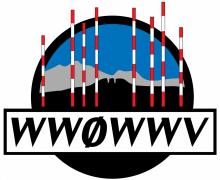In the spirit of making data from the Radio Receiver Instrument (RRI) onboard Swarm-E (formally known as e-POP) more accessible to the ham radio community, we have converted RRI's data into a ".raw" format so that it can be ingested into open source software such as Gqrx or GNU Radio. We have done this for all RRI data related to the 2015, 2017, and 2018 ARRL Field Days.
We encourage everyone to help us identify hams in RRI's signal. You can use the Gqrx tool discussed here, or you can use your own technique. If you decode a ham's call sign, if you would like to share your technique, or if you have any comments or suggestion contact us and let us know!
To help organize your findings, you can download a spreadhseet containing that you can fill out and send to us. Feel free to create your own spreadsheet or modify this one.
Swarm-E (e-POP) RRI
Swarm-E RRI is a digital radio receiver with 4 3-m monopole antennas. In most cases, the monopoles are electronically configured into a crossed-diople configuration. In this configuration, RRI records I/Q samples for the two dipoles. RRI has a sampling rate of 62500.33933 Hz, and a ~40 kHz bandpass, and can be tuned to anywhere between 10 Hz and 18 MHz. More information on Swarm-E RRI can be found in the Swarm-E RRI instrument paper or Gareth Perry's recent Radio Science article.
Publications
- Perry, G. W., Frissell, N. A., Miller, E. S., Moses, M., Shovkoplyas, A., Howarth, A. D., & Yau, A. W. (2018). Citizen radio science: An analysis of amateur radio transmissions with e-POP RRI. Radio Science, 53, 933– 947, https://doi.org/10.1029/2017RS006496.
Data Format
Each data file contains raw 32 bit complex I/Q samples for a given RRI dipole at a given frequency. The samples are interleaved, e.g., IQIQIQIQ... The data files do not contain any metadata. Any information regarding the time, frequency, and corresponding RRI dipole is in the file name.
Filename Format
The filename format gives information about the time and data of the recording, the tuned frequency, and which of RRI's dipoles the recording corresponds too. For example, gqrx_20150628_011614_3525000_62500_RRI_Dipole1 contains data recorded on Dipole 1, starting at 01:16:14 UT on June 28, 2015, at 3525000 Hz (3.525 MHz), at a sampling rate of 62500 Hz (RRI's 62500.33933 Hz sampling rate).
Gqrx
We have opted to convert the data into the .raw format so that it can be ingested into Gqrx. There are other ways of analyzing RRI's data; this is just one way which we felt was as easy first step. We are open to posting about other techniques on the HamSCI site as well. To help get started with Gqrx, we have developed a How to play an RRI raw IQ file on Gqrx page.
Data Files
The data files may be downloaded directly from the Zenodo repository here.



